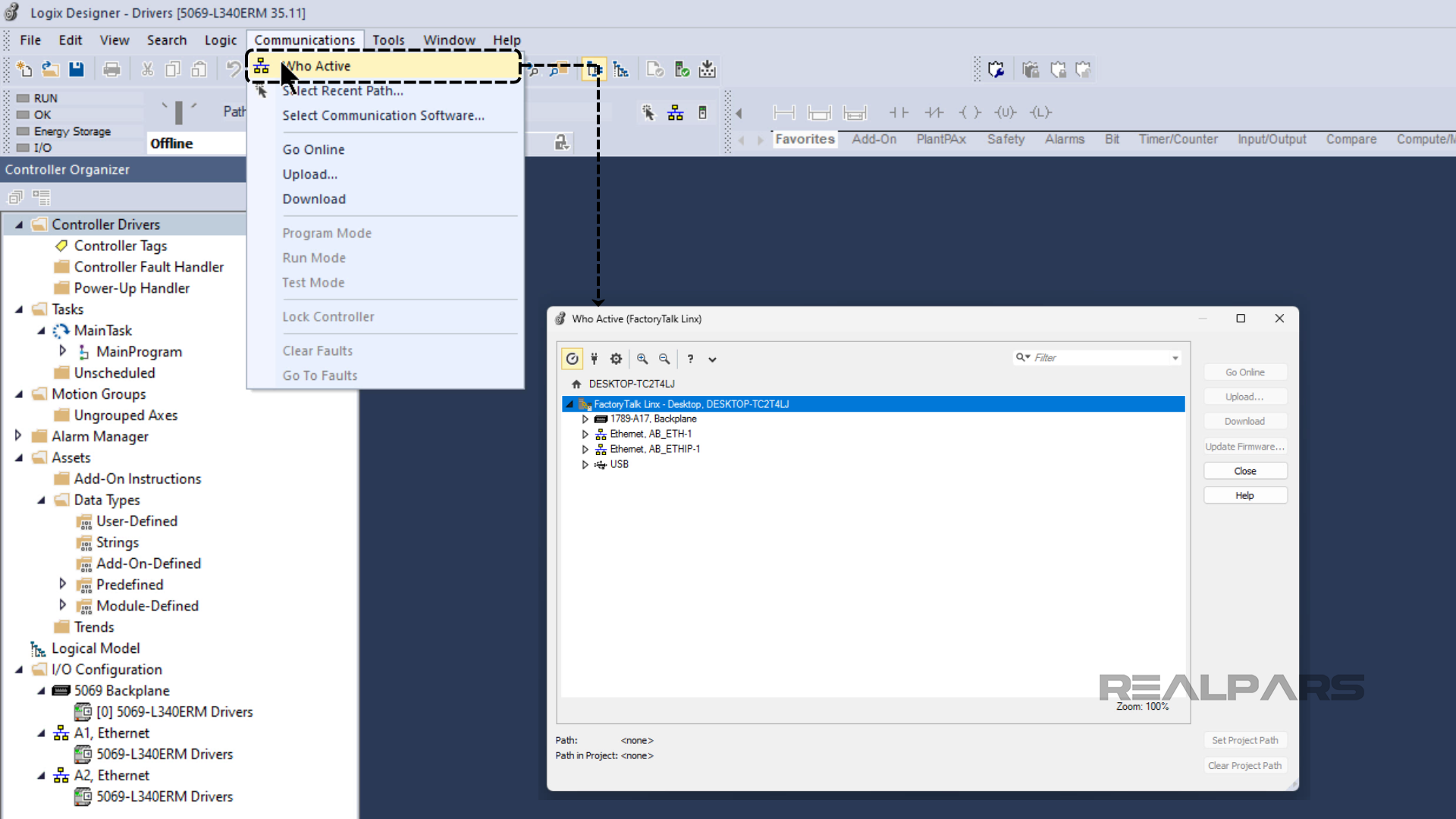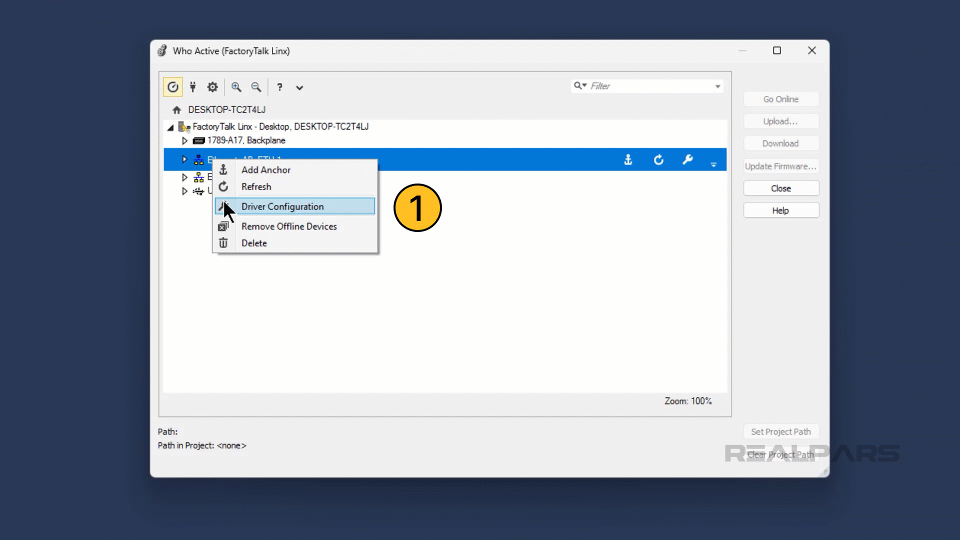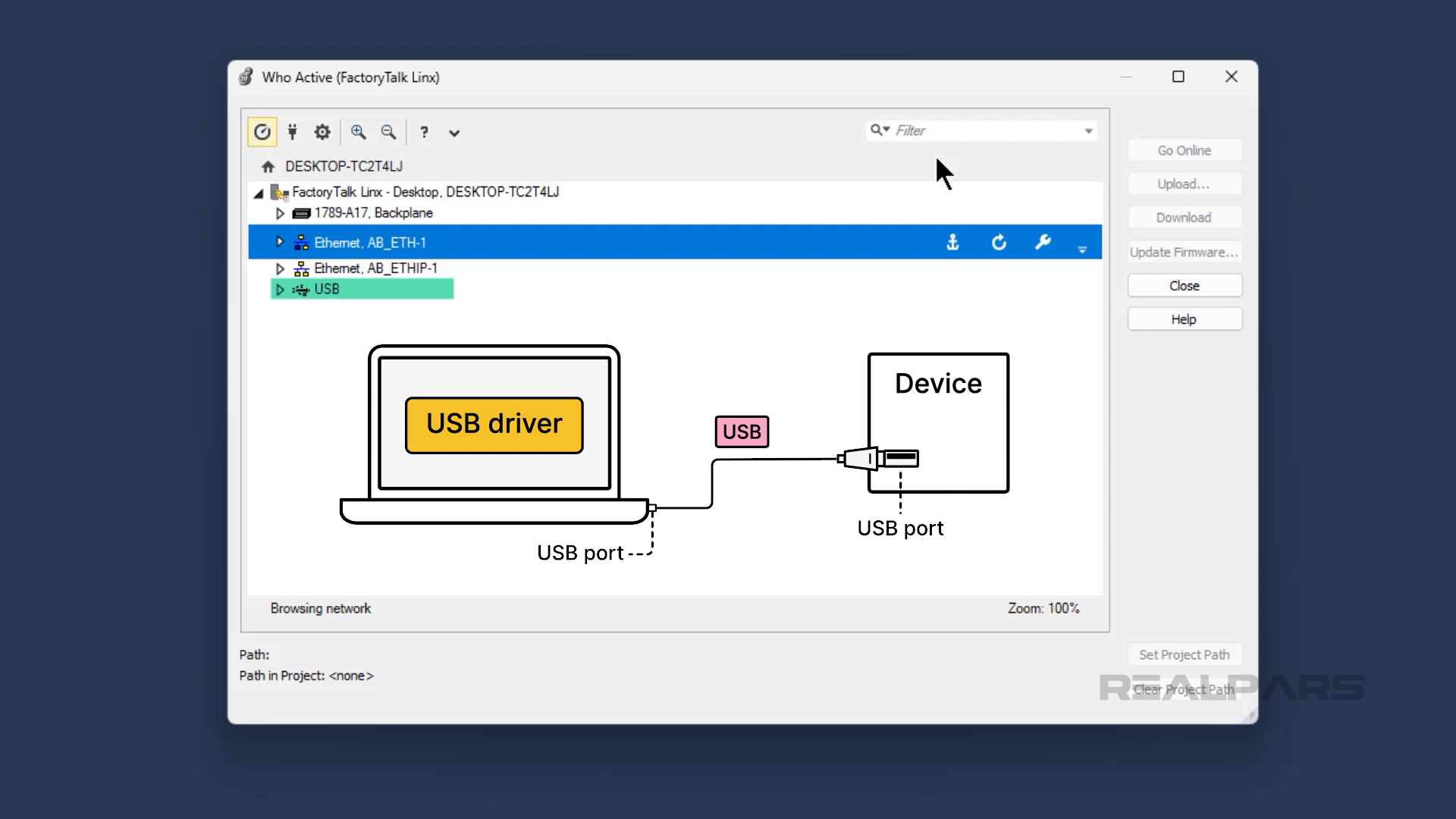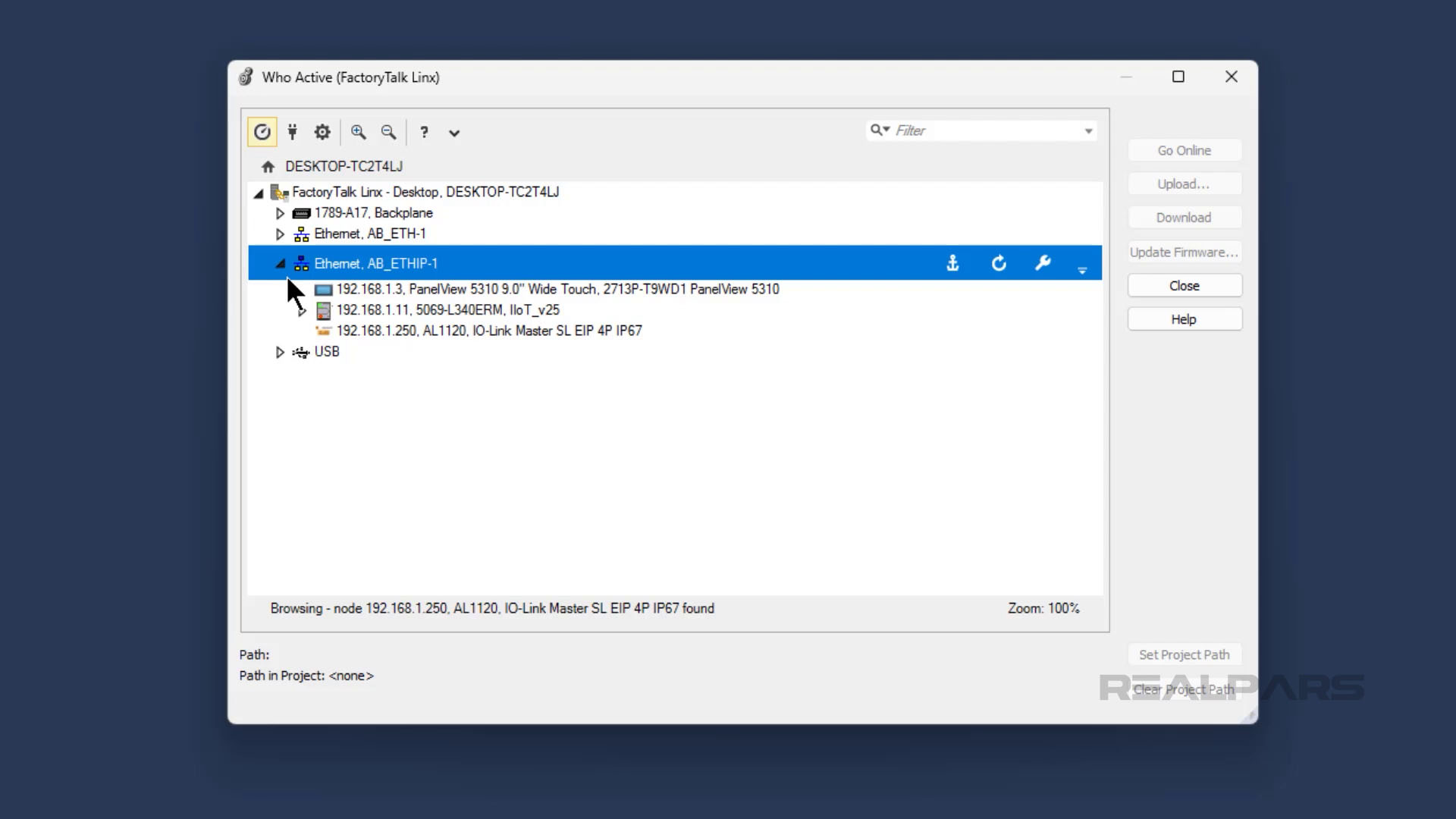How to Configure Communication Drivers in FactoryTalk Linx


FactoryTalk Linx is a Live Data Server and communication server developed by Rockwell Automation. It is designed to exchange information between Allen Bradley control systems and Rockwell Automation software like Studio 5000 Logix Designer and FactoryTalk View applications.
FactoryTalk Linx is the replacement for the older RSLinx Classic communication software that you may have previously used.
In this article, I’ll show you how to configure communication drivers in FactoryTalk Linx that you can use to find devices on a network and interact with them.
Let’s start by talking about what a communication driver is.
Communication drivers
A communication driver is a piece of software that lets different systems exchange data over a network.
If you have ever plugged a printer into your computer, you have worked with a communication driver. Most of the time, the correct communication drivers are automatically installed.
Sometimes, automatic driver installation doesn’t go according to plan and you have to manually install a communication driver on your computer so that it can talk to the printer.
When it comes to modern Allen Bradley systems, communication drivers are configured in FactoryTalk Linx or, for older systems, RSLinx Classic.
Although FactoryTalk Linx is a standalone software product, it is deeply embedded in Studio 5000 Logix Designer and you will mostly interact with it through Studio 5000 Logix Designer.
Let’s open the FactoryTalk Linx Who Active window to see how we can use communication drivers in FactoryTalk Linx.
Access FactoryTalk Linx
In Studio 5000 Logix Designer, you can access FactoryTalk Linx by clicking on Communications - Who Active or by clicking on the set communications path button on the toolbar.

The Who Active window opens which is actually a view of the FactoryTalk Linx Network Browser with some additional features configured for Studio 5000 Logix Designer.
In the left pane of the Who Active window, you can configure communication drivers and use those drivers to find devices on an industrial network.
On the right side of the Who Active window, you can interact with a selected device by going online with it, uploading a project from the selected device, downloading the project to the selected device or updating the firmware.
As you can see here, there are several different types of communication drivers available in FactoryTalk Linx by default.

Let’s quickly talk about the differences between these drivers.
Types of drivers
The first driver in the list is a 1789-A17, Backplane driver. This is a special driver that lets FactoryTalk Linx communicate with a Studio 5000 Logix Emulate emulated controller.

The next driver in the list is an Ethernet driver called AB ETH 1. An Ethernet driver is used to communicate with devices with a specific IP address or within a range of IP addresses.
You can right-click on an Ethernet driver and select Driver Configuration to open the Configure Dialog and then use the Add New button to define an IP address or a range of IP addresses to monitor for devices.

There is also an EtherNet/IP driver in the list. An EtherNet/IP driver uses broadcast messages to discover all of the devices on a network. This is the most commonly used type of driver but it is important to note that broadcast messages use bandwidth on the network and can affect network performance.

Finally, there is a USB driver. This driver is used to communicate with devices that are connected to your computer with a USB cable.

Now that we know what types of drivers are available in FactoryTalk Linx, let’s see how we can find devices on the network using the EtherNet/IP driver and interact with them.
Work with communication drivers
You can click on a driver in the Who Active window to activate it. Once activated, the driver will search the network for devices.
In this case, the driver has found three devices on the network - a PLC, an HMI, and an IO-Link Master.

By using the dropdown toggles, I can expand the controller to see what modules are connected to the controller on the backplane.

I can also right-click on a device to interact with the device.
From this context menu, I can view the device’s properties and statistics related to the device, and configure the device. I can also upload the device’s EDS, or Electronic Data Sheet, file which is the configuration file that tells Studio 5000 Logix Designer how to communicate with a device.

Once I have a device selected in FactoryTalk Linx, the action buttons on the right become active.
I can use these buttons to go online with the PLC, upload a project from the PLC, download the open project to the PLC, or update the firmware of the PLC.
For now, I will download the project to the PLC by clicking download and download again.
After the download is complete, I change the controller back to Run mode.

Wrap-Up
In this article, I explained what FactoryTalk Linx is and how it relates to RSLinx Classic.
After learning what FactoryTalk Linx is, we learned what types of drivers are available in FactoryTalk Linx and what the difference between these drivers is.
Finally, we went through the most common use case of FactoryTalk Linx which is to provide communication between Studio 5000 Logix Designer and an Allen Bradley PLC.
Now that you know how to download a project to an Allen Bradley PLC, you may be interested in learning how to program Allen Bradley PLCs.
If you're a RealPars member, Luckily, RealPars has courses covering programming both Allen Bradley Logix 5000 PLC systems and Micro800 PLC systems. We are constantly adding new courses to provide end-to-end training for Allen Bradley PLC systems.
Frequently asked questions
Learn from Industry Experts
With a 7-day trial, then €35/month